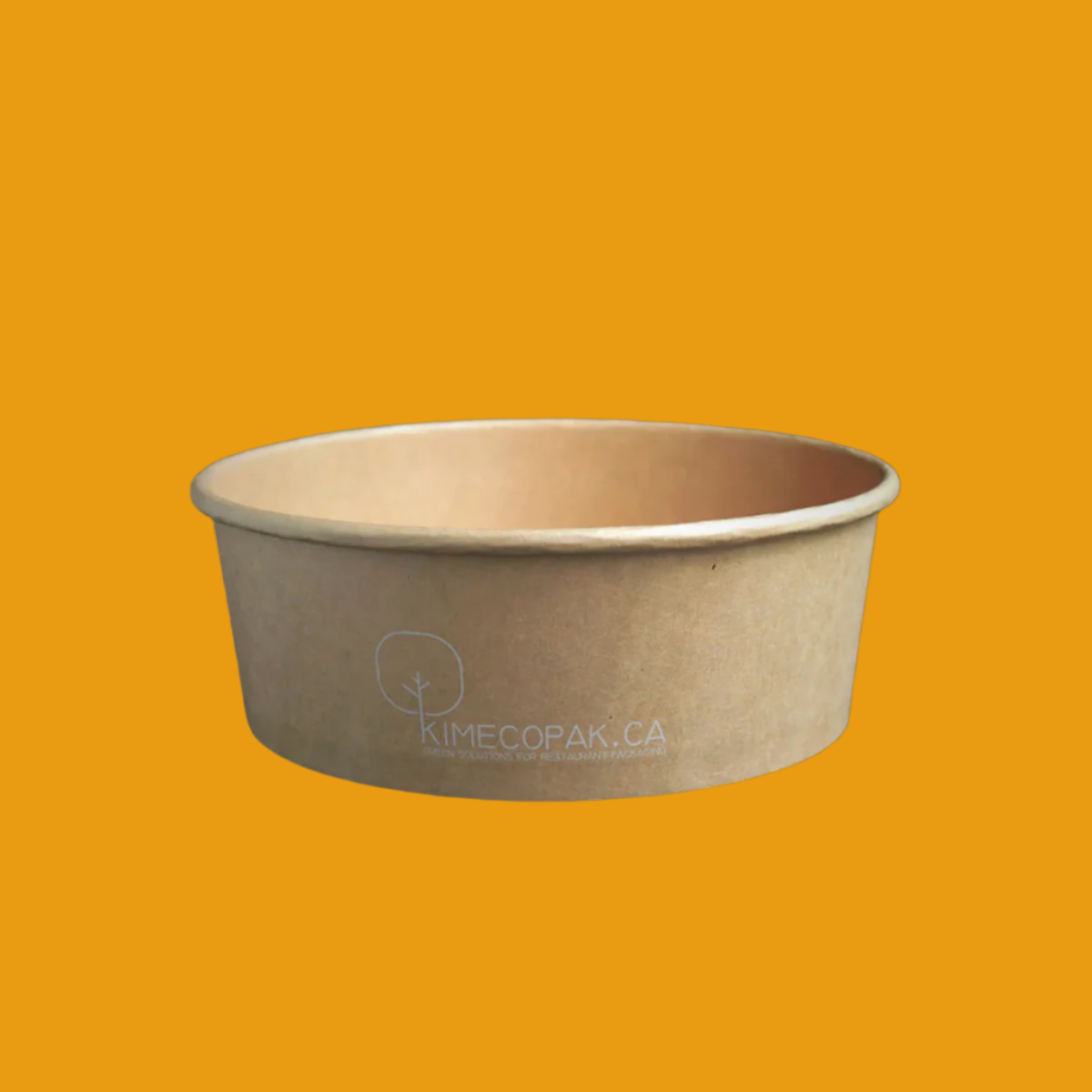Whether you run a fast-casual restaurant, school cafeteria, or corporate catering service, implementing clever salad bar ideas can enhance the customer experience and streamline operations. This article shares practical tips for ingredient selection, layout design, and eco-friendly serving solutions that work across foodservice settings.
-
How to Start a Salad Bar and Make It a Local Favorite
-
Top Lunch Catering Ideas to Delight Your Guests and Clients
-
12 Brand Designs Ideas for Food Business
What is a Salad Bar? Benefits of Implementing the Salad Bar Model

A salad bar is a self-serve dining option that allows customers to create their own salads by selecting from a variety of fresh ingredients. These bars often include a wide array of greens, vegetables, proteins, grains, fruits, dressings, and toppings, providing an interactive dining experience. Common types of salad bars can be found in restaurants, cafeterias, and even at catered events, all aiming to offer personalization and variety.
Benefits
Implementing a salad bar model comes with several notable advantages:
- Enhanced Customer Experience: Customers appreciate the freedom to choose their ingredients according to their preferences and dietary needs. This involvement can lead to higher satisfaction as they enjoy a meal tailored to their tastes.
- Diverse Menu: A salad bar allows establishments to offer a wide range of options without the need to maintain a large menu. Customers can create something different every visit, resulting in returning clientele who appreciate variety.
- Reduced Operating Costs: A salad bar can help minimize food waste since customers only take as much as they want and can combine items creatively. Additionally, the diverse ingredients can often be used across various menu items, leading to efficient inventory management.
Popular Salad Types for a Salad Bar

Salad bars are ideal for showcasing an assortment of salad styles. Here are some popular types that can entice customers:
Vegetable-Based Salads
- Caesar Salad: Classic romaine lettuce with parmesan cheese, croutons, and, of course, the distinctive Caesar dressing.
- Greek Salad: A vibrant combination of cucumbers, tomatoes, olives, and feta cheese dressed lightly with olive oil and oregano.
- Garden Salad: A hearty option featuring mixed greens topped with assorted vegetables, plastic-free and delicious.
Protein Salads
- Grilled Chicken Salad: Tender grilled chicken slices on a bed of greens often accompanied by an array of colorful vegetables.
- Salmon Salad: Flaky, savory salmon served atop greens with complementary items like avocado and nuts.
- Tofu Salad: A fantastic choice for vegetarians, marinated tofu offers a flavorful protein source.
Grain-Based Salads
- Quinoa Salad: Quinoa tossed with vegetables and light dressing provides a nutritious and satisfying option.
- Couscous Salad: Light and fluffy couscous mixed with fresh veggies creates a versatile salad dish.
- Barley Salad: Chewy barley combined with roasted vegetables makes for a filling and healthy choice.
Fruit Salads
- Fresh Seasonal Fruit: A refreshing collection of whatever is ripe and in season, offering a burst of flavor.
- Tropical Fruit Mixes: A blend of pineapple, mango, and kiwi transports diners to a tropical paradise with every bite.
Salad Bar Menu Layout and Display Tips

Creating an inviting salad bar is all about thoughtful layout and presentation. Here’s how to do it effectively:
Layout Tips
- Ingredient Zones: Organize the salad bar into clear sections (e.g., greens, toppings, proteins, grains, and dressings) to help customers navigate easily through the offerings.
- Dressing and Topping Stations: Place the dressings and toppings towards the end of the bar. This encourages customers to fill their bowls with all the delicious ingredients first, making the final touch an enhancement.
Serving Tools
- Stainless Steel Trays: Utilizing these durable and easy-to-clean trays keeps ingredients at the right temperature and makes the bar look polished.
- Compostable Plastic Containers: For takeout options, these eco-friendly containers offer a green alternative that resonates well with environmentally conscious consumers.
- Tongs: Ensure that there are enough tongs for each ingredient to minimize cross-contamination and streamline service.
Decor
- Use of Harmonious Colors: Choose decor elements that complement the fresh ingredients, such as greens, browns, and whites, which add a natural feel that enhances the overall aesthetic.
- Clear Labeling: Label all items, particularly allergens, to ensure customers easily know what is available and make informed choices.
Choosing Eco-Friendly Packaging and Utensils

In today's environmentally conscious world, opting for eco packaging and utensils is not just a trend but a necessary step for any salad bar. By using sustainable materials, you not only contribute to reducing waste but also appeal to a growing base of eco-aware customers.
Green packaging
- Kraft paper bowls: These bowls are biodegradable and compostable, making them an excellent choice for salad bars. They provide durability while reducing the plastic footprint.
- PLA cups: Made from cornstarch, PLA (polylactic acid) cups offer a clear and appealing presentation for your drinks or dressings without the harmful effects of traditional plastics.
- Paper bags: For takeout orders, paper bags are a practical and environmentally friendly option. They can be customized with your branding, enhancing visibility while supporting sustainability.
Sustainable disposables
- Wooden cutlery: Biodegradable and sturdy, wooden utensils are an attractive alternative to plastic. They elevate the dining experience and are often more comfortable for customers to use.
- Bamboo straws: These reusable straws are not only chic but also contribute to the reduction of single-use plastics. Offering them encourages a more sustainable lifestyle among customers.
Benefits
- Reduces plastic waste: By switching to eco-friendly materials, a salad bar can significantly cut down on plastic usage, aligning with the values of modern consumers.
- Elevates brand image: Demonstrating a commitment to sustainability enhances your brand’s reputation, making it more likely for consumers to choose your salad bar over traditional options.
Best Practices for Operating a Salad Bar
Running a successful salad bar relies heavily on efficient operations and maintaining high standards. Here are some key practices to ensure your salad bar runs smoothly.
Ingredient storage
- Use refrigerated units: Freshness is essential in a salad bar. Utilizing high-quality refrigerated units helps maintain ideal temperatures, ensuring ingredients remain crisp and safe to consume.
- Monitor temperatures: Regularly checking and documenting temperatures can prevent spoilage, contributing to food safety and customer satisfaction.
Inventory control
- Track usage: Keeping a close eye on ingredient usage allows for smarter ordering practices. This not only prevents waste but also ensures that popular ingredients are always available.
- Order wisely: Understanding peak times and customer preferences enables you to stock adequately without over-purchasing. This strategic planning minimizes waste and maximizes profitability.
Staff training
- Hygiene protocols: Training staff in food safety and hygiene practices is critical. Regular cleaning, handwashing, and proper handling of ingredients can prevent contamination.
- Customer service skills: Friendly and knowledgeable staff can greatly enhance the customer experience. Training employees to engage with customers can foster a welcoming atmosphere.
Seasonal Salad Bar Menu Suggestions
Offering a rotating menu that reflects seasonal ingredients can not only optimize freshness but also keep your offerings exciting for repeat customers. Here's how to tailor your salad bar to the seasons:
Summer
- Watermelon feta salad: Refreshing and vibrant, this salad combines the sweetness of watermelon with salty feta and fresh mint, ideal for warm days.
- Mango shrimp salad: This tropical salad pairs juicy mango with succulent shrimp, topped with a zesty dressing that captures the essence of summer.
Autumn
- Roasted pumpkin salad: The earthy flavors of roasted pumpkin combined with quinoa and greens make for a hearty and satisfying dish, perfect for the cooling days.
- Apple walnut salad: Crisp apples, crunchy walnuts, and mixed greens tossed in a light vinaigrette create a delightful harvest combo.
Winter
- Beetroot salad: Earthy beets mixed with goat cheese and arugula provide warmth and richness during the colder months.
- Warm quinoa salad: Combining quinoa with roasted vegetables makes this salad a filling and nutritious option, ideal for winter menus.
Spring
- Asparagus salad: Tender asparagus topped with parmesan and a citrus dressing encapsulates the freshness of spring.
- Strawberry goat cheese salad: A delightful mix of strawberries and creamy goat cheese, this salad is both sweet and savory, capturing the essence of the season.
Conclusion
Staying current with food trends is essential for drawing customers into your salad bar. By investing in eco-friendly packaging, you not only enhance your brand's values but also provide a unique selling proposition in a competitive market.
Offering a diverse and seasonal menu while maintaining high operational standards will help to create a memorable and sustainable dining experience. This proactive approach will not only satisfy customers but also keep them coming back for more









